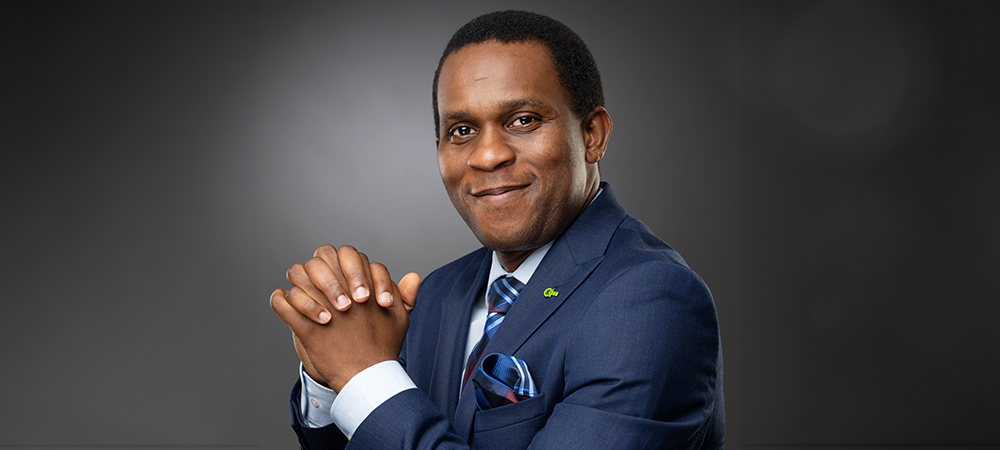In 2018, Nigeria’s Central Securities Clearing System began re-evaluating its operational strategy and recognised the need for a technology overhaul and by 2019 started looking for a partner to support its redefined strategy around service, stability, scalability, disaster recovery.
The Central Securities Clearing System, CSCS stands as Nigeria’s premier financial markets infrastructure, positioned at the centre of the capital market. Its role encompasses a broad spectrum of services for the country’s financial ecosystem.
The CSCS is also Nigeria’s Central Securities Depository, licensed to continue depository, clearing and settlement of all transactions in the Nigerian Capital Market. The CSCS processes 99.3% of all trades in the capital markets, underscored by its position in the equities market and presence in bonds and other financial areas.
“A defining characteristic of the business is our deep-rooted technological ethos and the fact that we view ourselves not just as a financial entity but fundamentally as a technology company operating within the capital market,” says Tobe Nnadozie, Divisional Head of Business Technology and Digital Innovation at Central Securities Clearing System.
Innovation road map
In 2018, CSCS began re-evaluating its operational strategy and recognised the need for a technology infrastructure overhaul. Then by 2019, after a planning and strategy formulation, CSCS looked for a partner to support a redefined strategy anchored in delivering self-service platforms, and expanded API infrastructure.
As well as an environment that could support technologies like machine learning, artificial intelligence, robotic process automation, and blockchain. CSCS wanted a technology infrastructure for service, stability, scalability that must deliver:
- Consistent service provision to the market
- Deliver a robust business contingency
- Effective disaster recovery
Following an analysis of potential partners, Nutanix emerged as a front-runner. Despite engagements with Nutanix, it was not until 2019 and 2020 that CSCS considered a partnership.
But the partnership faced a challenge, which was the lack of a reference implementation within the capital market. No entity had previously deployed Nutanix at the scale CSCS envisioned.
Transitioning to a new infrastructure, especially one as extensive as CSCS’s, was no small feat. Its legacy system was extensive, with an intricate infrastructure of over 70 physical servers. The migration task was to retain only the core server and transpose functionalities from the others to a more modern, hyperconverged infrastructure.
Beyond the operational challenges, data security was a concern. Given the scale of their investment and the strict regulations in Nigeria, ensuring data security was not just crucial, it was imperative.
“Our vision was audacious: transitioning all our vital infrastructure onto Nutanix, barring one environment,” says Nnadozie.

Implementing the solution
With the help of Nutanix, CSCS streamlined its sprawling infrastructure to about 50 optimised servers. The new environment included a multi-cloud disaster recovery environment that promised rapid recovery and ensured zero downtime.
The collaboration with Nutanix witnessed an overhaul of nearly 90% of the systems, which were transitioned to just five Nutanix clusters, including a three-node cluster for its production environment and a two-node cluster for its disaster recovery environment, paving the way for a streamlined and futuristic operational module.
CSCS selected Nutanix Cloud Infrastructure, AHV Virtualisation, Prism Management, Nutanix Flow for its migration away from legacy systems. Nutanix now hosts the most vital components including CSCS database, data sets, pivotal applications, and essential APIs. CSCS has moved 90% of its systems to the Nutanix clusters.
“In our blueprint for technological metamorphosis, Nutanix was at the core,” says Nnadozie. “We are developing a multi-cloud disaster recovery system that can transition between on-premises and cloud operations, providing us flexibility. Incorporating Nutanix into our operations has brought transformative benefits to our company.”
According to CSCS, something that sets Nutanix apart is its support system. Using the Nutanix Ultimate License, it has access to premium support services. Furthermore, Nutanix Flow has proven invaluable, simplifying the management of the entire Nutanix ecosystem.

Benefits
The financial benefits have become clear, with savings of approximately $450,000. This arises from a combination of factors, including reduced licensing costs, data centre expenses, and less dependence on costly network devices,
Unlike the uncertainties tied to traditional systems, the Nutanix solution provides scalability and transparency, allowing CSCS and its partners to develop and scale new digital products and solutions rapidly. The financial clarity extends to budget predictability. CSCS is also implementing a robust cloud strategy, moving from outdated backup systems to instantaneous replications.
Regarding workforce impact, the team can manage this advanced environment through comprehensive training without expanding its headcount, and remote management provides flexibility and supports work-life balance.
“Our agility has positioned us as a strategic player in the capital markets. We are not merely providers but also innovators. Our ability to promptly roll out servers, replicate workloads, and introduce changes has accelerated our go-to-market strategies,” says Nnadozie
Beyond operational expectations, Nutanix has aligned with the company’s growth strategy and addressed concerns while remaining transparent about future plans, potential gaps, or costs.
“I have been in IT leadership for 20 years, and managing infrastructure has always been the biggest challenge. With Nutanix, that concern has taken a backseat. When I get a daily risk report from the Chief Risk Officer, infrastructure is hardly ever on it, and if it is, we have a solution,” says Nnadozie.
The ability to manage multiple OEM suppliers, is another win for the team. So is the user-friendly interface of Prism and Prism Central, offering an insightful overview and a platform for strategic planning, giving the team insights, operational clarity, and peace of mind.
“Nutanix is a central pillar in our strategies as we envision our future, and our production infrastructure will keep expanding with Nutanix,” says Nnadozie.
CSCS is looking to expand its hybrid cloud capabilities and is negotiating with cloud providers. Since Nutanix is the core of this strategy, it has made compatibility and integration with the Nutanix environment a prerequisite for future partners.
“Our roadmap with Nutanix stretches out for five to seven years. Naturally, as our business evolves, so will our requirements, and we will invest further in licenses, storage, compute capacities,” he ends.
“From the outset, we recognised the innovative and forward-thinking ethos of the CSCS team,” says Tunde Abagun, Sales Lead at Nutanix West, East, and Central Africa. “Their proactive approach to revolutionising Nigeria’s financial infrastructure has truly set them apart in the capital market space.”



